It’s challenging to live a debt-free lifestyle. Most of the world’s wealthiest billionaires have had to procure loans from time to time. Some made their fortunes from investments funded by bank loans.
However, debts can also be the most significant impediment in your journey toward financial independence. Indeed, there are numerous personalities whose business empires nearly crumbled due to huge debts. No wonder many investment experts cite poor debt management among the biggest contributors to the cycle of poverty.
So, while it’s okay to owe money once in a while, achieving true financial success lies in paying up your debts. And depending on how you manage your income and expenditure, you could eventually achieve a debt-free life.
We’ve prepared one of the most comprehensive debt management guides you’ll find nowhere else. Read below for expert tips on how to become debt-free.
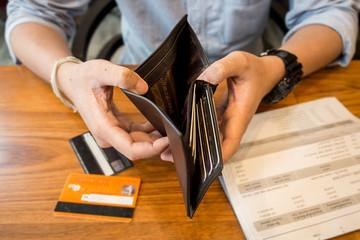
Getting Started
The first thing to do before learning how to attain debt-free living is to start by understanding what constitutes debt.
Now, a debt simply refers to the sum of money owed by a borrower (debtor) to a lender (creditor). For anything to qualify as debt, there must be an obligation requiring the debtor to repay it.
The term “debt” is commonly used within financial circles to denote money owed. However, debt may also assume non-monetary forms, such as gifts and services.
The second thing to understand is that debt comes in many forms, depending on the nature of the borrower and lender, the amount borrowed, the repayment period, and the collateral.
Below are the most common types of debt;
- Car Finance – Financial products that allow you to acquire a car on debt, including car loans and car leases
- Student Loan – A loan designed to help post-secondary students pay for associated education fees, including tuition, accommodation, and learning resources
- Student Debt – Not to be confused with a student loan, student debt is any type of debt owed by a student to a financial institution
- Home Equity Loan – A form of loan whereby the borrower uses their home’s equity as collateral
- Mortgage Loan – Also known as a mortgage, a mortgage loan is a loan used either by existing property owners to raise funds by putting a lien on their property or by aspiring property owners to raise funds to purchase real estate
- Home Equity Line of Credit (HELOC) – In this type of loan lenders agree to advance a maximum amount of money within a predetermined period using the borrowers’ property as collateral
- Bond – A debt security whereby lenders (typically governments, corporations, or municipalities) issue bonds to raise money for ambitious projects
- Corporate Bond – A bond issued by a company to raise funds, usually for business expansion or for austerity measures
- Debenture – A medium-to-long-term debt instrument that allows large corporations to borrow money at a fixed interest rate
- Commercial Paper – An unsecured promissory note, typically with a fixed maturity of less than 270 days
- Personal Loan – An unsecured loan that borrowers can use to pay for anything
- Payday Loan – A short-term unsecured loan typically marked by high-interest rates
- Credit Card Debt – A debt incurred when a credit card holder spends more than they have in their account
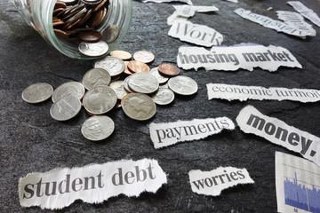
Difference Between Secured and Unsecured Debt
A secured debt is when a borrower pledges some collateral before being advanced to the loan.
Unsecured debt is the opposite – this type of loan isn’t collateralized by any asset or protected by a guarantor.
Difference Between Good and Bad Debt
Good debt refers to money you borrow to build wealth or improve your financial situation. Noteworthy mentions include student loans, bonds, and mortgages.
Bad debt, on the other hand, constitutes any debt that doesn’t guarantee long-term financial benefits. Examples include payday loans borrowed to fund a vacation or retail therapy.
Difference Between Revolving and Non-revolving Line of Credit
A revolving line of credit is a type of debt that requires a single application. A borrower can access credit facilities through the same account provided they’ve paid off their outstanding debts.
A non-revolving line of credit is a debt arrangement that involves the closure of a loan account upon full payment of all outstanding debts. The debtor must submit another application if they require more credit facilities.
Tips on How to Achieve Debt-free Success
1. Stop Borrowing
You’re probably already familiar with the adage, when you’re in a hole, stop digging. This maxim rings true when you’re in debt.
Avoiding loans may seem challenging, especially if you’ve spent your entire life in debt. But with constant practice, you’ll eventually tame your appetite for loans and achieve zero debt.
2. Repay Existing Debts
Congratulations on your resolve to stop borrowing more money! The second-most important tip is to settle all your outstanding debts.
Fortunately, there are several ways to repay your debts without putting undue strain on your finances. Some of those techniques include;
The Snowball Method
This method involves paying off your outstanding debts from the smallest to the largest. All you need to do is list your debts by their balance and then start by repaying the smallest ones.
However, remember to keep track of all your debts to ensure none becomes overdue. This will save you from incurring any late payment fees.
The Avalanche Method
The debt avalanche method entails prioritizing debts with the highest interest rates. Although this technique may prove challenging at first, it can ultimately be rewarding in the long run.
But just like the snowball method, ensure you’re making minimum payments on other debts while also tracking their due dates.
Debt Consolidation
Debt consolidation involves procuring one significant loan to settle smaller existing debts. This method is highly recommended when it’s becoming difficult to keep up with numerous payments and due dates.
Debt consolidation is also an ingenious saving technique. That’s because the new loan typically attracts lower interest rates than the combined rates from the existing smaller debts.
Even better is that numerous lenders provide debt consolidation loans.
Debt Relief
Debt relief refers to measures aimed at reducing or refinancing debt to make it easier to repay. Standard debt relief methods include writing off a portion of the debt and reducing the interest rates.
Some lenders may also spread the payments over a long period, either in addition to lowering the interest rates or without adjusting the outstanding interest rates.
Debt Validation
Debt validation is when a debtor verifies that a debt notice sent to them is valid.
The past few years have witnessed a rise in debt scams, whereby fraudsters send out spam emails to defraud unsuspecting clients into paying money they don’t owe. Enrolling in a debt validation program can help you spot these scams and ensure you’re only repaying a debt you truly owe.
Debt validation may also be key where money is owed, but the repayment terms are uncertain. The correspondence between the borrower, debt collector, or creditors can help clear doubts before the outstanding debt is repaid.
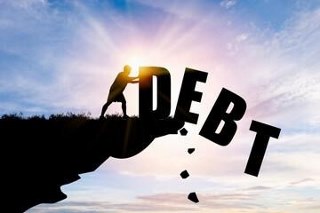
3. Track Your Expenditure
Another way to achieve a debt-free lifestyle is to track your income and expenditure. This might help you uncover areas of wasteful spending and address them before they take a toll on your finances.
The conventional wisdom is to monitor your monthly bills and daily expenses for at least one month. Note that the term “bills” here also includes your debt obligations.
There are several ways to track your monthly expenditure. Common methods include;
- Using a budget worksheet
- Keeping receipts
- Keeping notes in a notebook
- Using a money-free management application or banking app tracker
- Requesting a bank statement
4. Set Up a Budget
As we’ve just hinted, wasteful spending is among the numerous ways people plunge into debt. That makes it necessary to set up a solid budget.
Personal finance experts recommend using the 50-30-20 budgeting rule, which recommends allocating 50% of your income to needs, 30% to wants, and the remainder to savings.
The idea is to encourage saving by reducing wasteful expenditure. This ensures you always have a reserved amount to spend on financial emergencies instead of borrowing.
5. Start an Emergency Savings Account
Now that you’ve decided to set aside a fraction of your income to savings, the next logical thing to do is to open an emergency savings account. Be sure to link the savings account with your primary bank account to allow automatic deposits whenever your salary hits the main account.
You might also consider a high-yield savings account. Such accounts allow you to lend money to the bank for a fixed period at a considerable interest.
Other ways to boost your emergency savings account include scaling down your lifestyle, asking for a pay rise, and exploring passive income ventures.
6. Enroll in a Money Management Program
Implementing the above techniques may prove somewhat challenging. That’s where a money management program comes in.
But just what is money management?
Well, money management refers to processes that entail overseeing capital expenditure. These processes typically revolve around budgeting, spending, saving, and investing your savings.
Enrolling in a money management program can equip you with the nitty-gritty of financial planning. You’ll also learn various ways to increase your income streams while cutting back on your expenditure, ultimately staying debt-free.

Summary
Avoiding debt is one of the most effective wealth-creation strategies. Feel free to implement the above-listed tips to manage your debt and smile your way to financial freedom.
Remember to get professional help if everything else fails despite your best efforts.


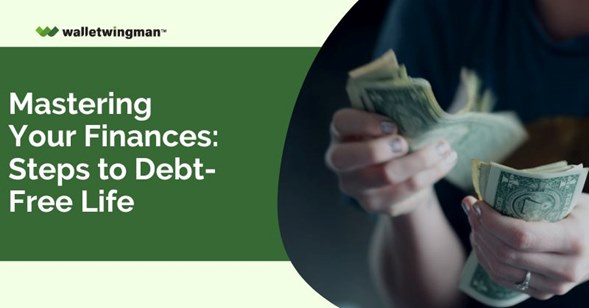
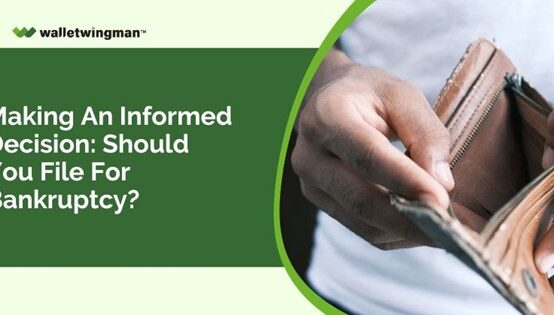 Making An Informed Decision: Should You File for Bankruptcy?
Making An Informed Decision: Should You File for Bankruptcy? 